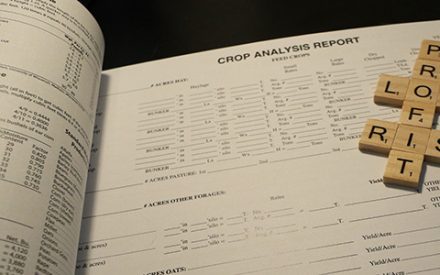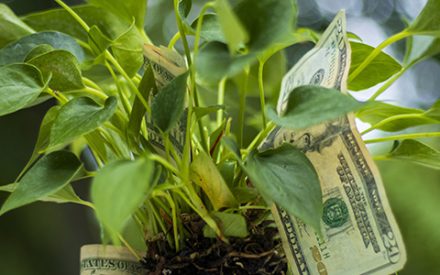Do you know your costs to produce an acre, bushel, or ton of your crop? As market price moves, is there an opportunity to capture a profit or is the price still too low? Do you know? Estimating, or even better knowing, your cost of production on a per bushel or per ton basis helps to determine marketing or purchasing strategies. Extension’s UW Crop Enterprise Budget Tool can be used to help estimate cost of production.
The first information needed in any budget is income. For crops, begin with estimating yields and the price at which you hope to sell. The key to the income section in a crop budget is to use realistic yield goals. Once yield goals are determined, consider market prices currently being offered as cash delivery, forward contracts, and futures market. Most grain buyers will post daily prices for cash and future delivery.
Once income is estimated, it is time to look at expenses. Expenses are usually broken into variable costs and fixed costs. Variable costs are those needed to grow the crop from year to year such as seed, fertilizer, and pest management. Fixed costs are those that will be there regardless if you grow the crop or not such as interest, taxes, and depreciation.
Expenses in a crop budget start with soil and fertility needs. Soil testing and knowing your crop nutrient needs is the best way to reduce fertility expenses and spending on unnecessary nutrients. Guidance and recommendations from resources such as Nitrogen Guidelines for Corn can help with fine tuning nitrogen application rates and other nutrient expenses. Following soil test recommendations for lime and other amendments is another way to make crop input costs more efficient.
Seed costs along with fertility and nutrient needs often make up about half of the variable costs. Seed costs can be highly variable depending on if the seed is conventional or includes a technology fee. Planting population is another major factor in seed costs. Research on planting populations for corn, soybean, and alfalfa has provided recommendations to assist in determining optimum populations. The Crop Seed Price Calculator is an excellent tool to compare two seed selection options.
Pest management programs are another variable cost and can range from a quarter to a third of the total variable costs. Depending on the year, insect, weed, and disease pressure can change requiring different levels of pest management inputs. Crop scouting is the best method to determine pest infestation levels and control options. Multiple applications or cultivation passes may be needed to achieve good control of some pests. Each application or trip across the field needs to be considered when estimating pest management costs.
Tillage and planting operations can be considered a variable cost related to the fuel and labor and a fixed cost when machinery depreciation is calculated. One way to get a handle on these costs is to use a custom rate. The custom rate often includes machinery, fuel, and labor costs. The Wisconsin Custom Rate Guide is a resource to help estimate machinery costs related to field operations. Harvest, drying, and storage costs can all be estimated from the guide.
Land is often one of the highest costs when estimating cost of production. Land costs can make up 20% to 40% the total cost of production. If owning the land, a minimum cost is the tax rate and interest on a per acre basis. If renting the land, use the rental rate. A resource for estimating the land rental rate is the National Agriculture Statistics Service County Cash Rent report.

 ▶ Fall 2025 Financial Assistance for Producers
▶ Fall 2025 Financial Assistance for Producers ▶ Fall 2025 Ag Policy Update
▶ Fall 2025 Ag Policy Update ▶ Fall 2025 Corn and Soybean Market Outlook
▶ Fall 2025 Corn and Soybean Market Outlook ▶ AI in Agriculture
▶ AI in Agriculture


